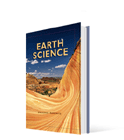 Geology Webquest Internet Investigations Links
Geology Webquest Internet Investigations Links
![]()
Internet Investigation
for Wednesday & Thursday, May 20 and 21, 2009
ES1706:
How Does the Temperature at One Location Change Over a Year?
ES2101:
What Factors Control Your Local Climate?
Internet Investigation
for Wednesday/Thursday, April 29 and 30, 2009
Links to Help you
Complete Part 1 of the worksheet Galaxies
and the Expanding Universe
Hubble
Space Telescope: Galaxy images
Galaxy
Classification: from
More
Information on Galaxy Classification: from PBS
Hubble’s
Galaxy Classification Scheme: Go here to fill in #7.
Perspectives:
See our Milky Way Galaxy at different scales.
Classifying Galaxies:
Go here to learn the difference between E3 and Sb.
Hubble
Tuning Fork Diagram: Why it’s somewhat wrong
Google Sky Tour: Open Google Sky (inside Google
Earth). Change to Google Sky. Go to the layers section on the lower left hand
side. Maximize “
Internet
Investigation for Tuesday, March 31, 2009
ES2605:
How Does the Sunspot Cycle Affect Earth? Do this first!
ES2603: Why Does the Size of the Sun Appear to Change?
Old Solar Cycle Returns: A NASA story dated 3/28/08 explains that the sunspots we’re seeing now are due to the old solar cycle and not the new one.
SOHO Images: Go here for Solar and
Heliospheric Observatory Images of the Sun.
Internet
Investigations for Wednesday/Thursday/Friday, February 25/26/27, 2009
ES2506:
What if Earth and the Moon Were Hit by Twin Asteroids?
Google Moon: Go here for geologic analysis of the moon.
Apollo Mission
Information: Go here for detailed information about the lunar geology
explored by Apollo missions.
Far Side of the Moon: Go here and here to see images
of what the far side (the side we never see) of the Moon looks like!
Traeger’s Moon
PowerPoint®: This will be helpful for some of the questions.
Internet
Investigations for Homework due Tuesday, January 13, 2009
ES1010:
Which Fault Moved in the Northridge Earthquake?
ES1001:
How Are Earthquakes Related to Plate Tectonics?
Internet
Investigation for Wednesday/Thursday/Friday, January 7/8/9, 2009
ES1102:
How do Rocks Respond to Stress?
ES1106:
What Forces Created These Geologic Features?
Google
Earth Investigation Links for Wednesday/Thursday, December 17/18, 2008
National
Geographic Forces of Nature: Go here to get a good overview of the types of
volcanoes and where they form.
Smithsonian
Institution Global Volcanism Program: Go here for more information about
your volcanoes and to download the Holocene volcano files under “Google
Earth Placemarks.”
Tectonic
Plate Boundaries: Go here to download the KMZ file called “Tectonic
Plate Boundaries.”
Extra
Credit Internet Investigation for given out on Tuesday, December 16, 2008 due
Friday, December 19, 2008
Volcano Eruption Prediction website and USGS Volcano Website. Go here for worksheet.
Internet
Investigation for Tuesday, December 9, 2008
ES0602:
How do Rocks Undergo Change?
ES0603:
How do Igneous Rocks Form?
Internet Investigation for Block Day, November 5 and 6, 2008
ES0802:
How Old Is The
ES0810:
How Fast Do Plates Move?
This Dynamic Planet: Go here to access a map that tells what direction the plates are moving and where the boundaries are.
Mineral Resources Project
for Block Day, October 22/23, Friday, October 24, 2008, and Monday, October 27,
2008
Minerals in your World Project Description. You MUST submit your work electronically. Go here for instructions on how to do this.
Suggested
project flow
chart for the structure of your project.
Minerals
in Your World Website
Mineral Information Links (Scroll Down to Minerals and Rocks Links)
How It’s Made TV Show Website: Go here to watch some episodes online to see how some everyday products are made.
How Stuff Works: A good website for learning about how stuff works
National Geographic Article High Tech Trash: about where electronics go when they die and what happens to people and the environment when they do.
LA County Department of Public Works Hazardous Waste Website: Go here to find what you should put in the trash, and what you should not.
Project Ideas: Go
here to see some examples of very basic projects that were done by 7th
graders in
More PowerPoint hints: Some PowerPoint pointers courtesy of Ms. Bozzani.
Noodle Tools: This website is excellent for making sure your works cited page/slide meets MLA standards of excellence. See Mrs. Bozzani for the password.
Internet Investigation
for Friday, October 10, 2008
Part 1: ES0501:
How Many Protons, Neutrons, and Electrons are in Common Elements?
Part 2: ES0506:
How Do
Internet Investigation
for Block Day, September 24/25, 2008
Part 1:
ESU101:
How Can Getting Farther Away from Earth Help us to See It More Clearly?
Part 2:
ES0204:
Observe some products of a geographic information system (GIS)
Part 3:
Terraserver: Go here to find an
aerial photo of the school! This will substitute for Google Earth if it
doesn’t work.
Part 4: National Atlas: Go here to make a geologic map of La Cañada!
Internet Investigation
for Friday, September 5, 2008
ES0103:
How are Earth’s Spheres Interacting?
ES0108: How do Interactions among Earth’s Spheres Vary Regionally?
![]()